Georgia State University (GSU) is the largest school in the University System of Georgia. After it merged with Georgia Perimeter College in January 2016, its enrollment jumped from approximately 30,000 students to approximately 54,000 students.
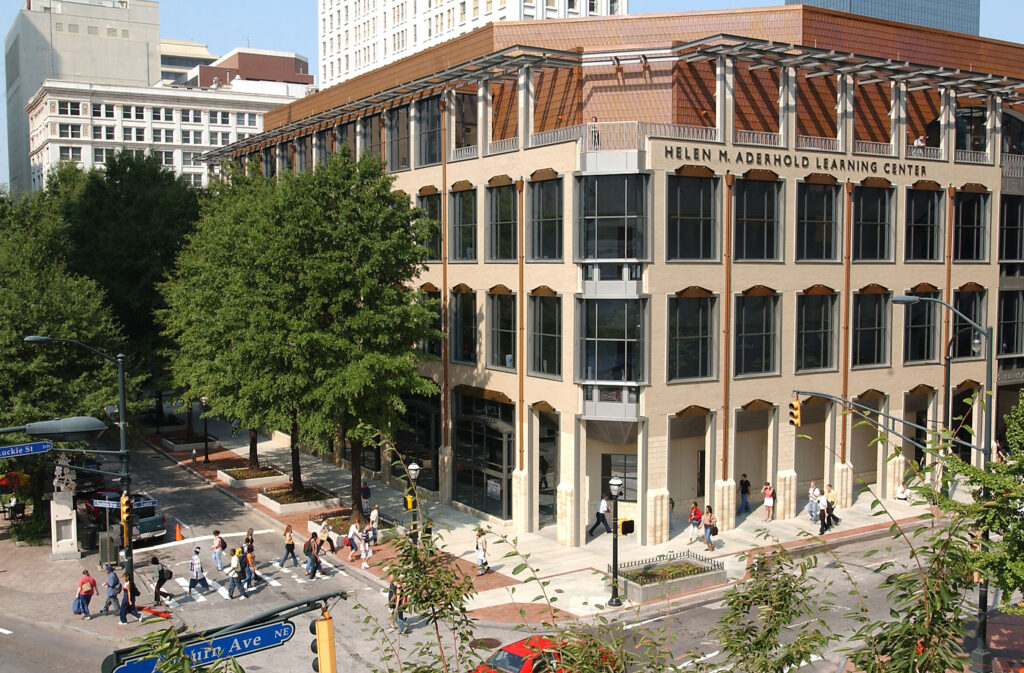
Courtesy of Special Collections & Archives, Georgia State University Library.
An urban university centered in downtown Atlanta, GSU began as an evening school and grew in response to the educational needs of the expanding metropolitan area. Before World War II (1941-45) no other major southern city had a facility like the Evening School, a public college offering degrees to working young adults. In that capacity GSU has provided a regional educational model for the urbanizing South.
Origins
The Evening School began as part of the Georgia Institute of Technology’s Commerce School, established in 1913 to broaden Tech’s engineering instruction. At least half of the original forty-four enrollees were “irregular” students employed in local businesses. To serve that constituency, the Evening School opened in downtown Atlanta the following year. Under the leadership of Dean Wayne Sailley Kell (1913-17), Tech’s first commerce class graduated in 1916. All men with full-time jobs, they received three-year Bachelor of Commercial Science (B.C.S.) degrees. That same year the Commerce School introduced a four-year Bachelor of Science in Commerce (B.S.C.), which was generally unavailable to Evening School students. With a decline in male students during World War I (1917-18), Kell admitted women to the Evening School in 1917. Before its separation from Tech in 1933, thirty-five women received B.C.S. degrees from that all-male institution.
During the economic boom of the 1920s, the Evening School thrived as enrollment, 364 in 1920, nearly doubled over the next twelve years. Dean John Madison Watters (1917-25) inaugurated innovative programs in life insurance, real estate, and marketing that fostered important ties to the business community. Director Frederick Wenn (1925-27) lured area students by finding them part-time jobs with Atlanta businesses. Director George M. Sparks attracted numerous students through his statewide contacts. Consequently, the Evening School had to relocate four times before 1932 to accommodate the expansion. Sparks also promoted the arts and sciences, although his major contributions grew out of his superb financial management; his acquisition, renovation, and occupation of three different buildings between 1931 and 1946; and his vision of the school’s future as a major state university.
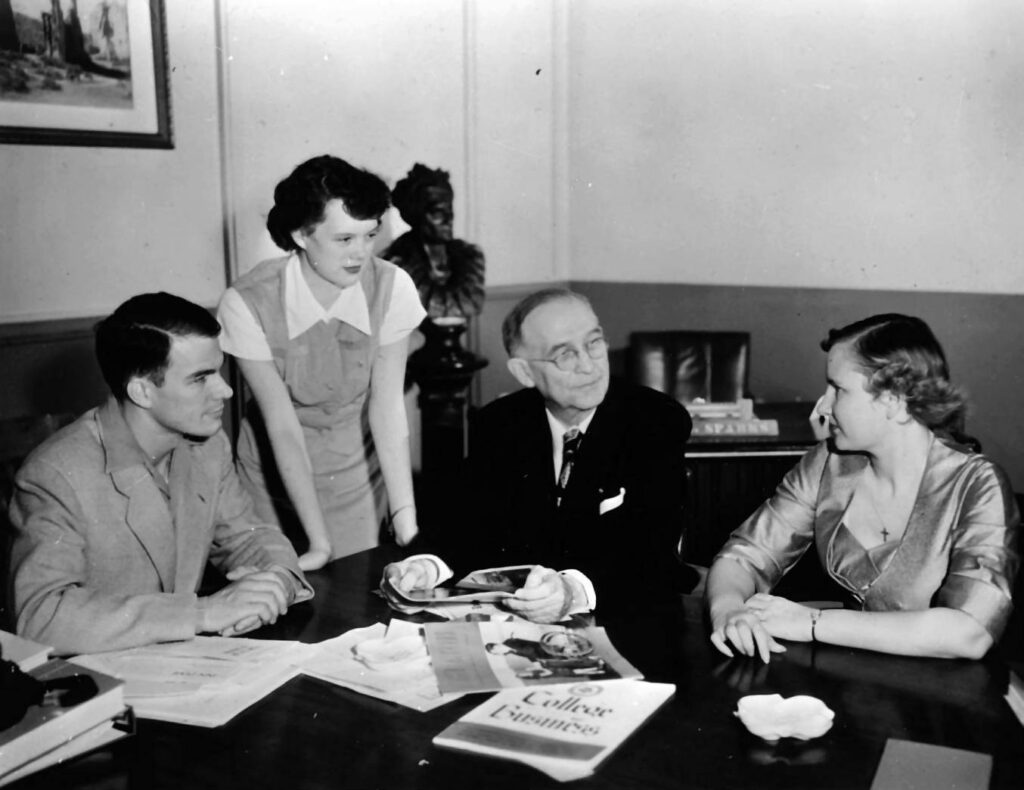
Courtesy of Special Collections & Archives, Georgia State University Library.
The Evening School and the University System of Georgia
Separated from Tech in 1933 under the newly created University System of Georgia (USG), the USG Evening School (USGES, also referred to as the System Center or Atlanta Center) operated directly under the university system chancellor for fourteen years. During a confused transition period, Sparks almost single-handedly expanded the curriculum, enrolled students, and transformed the Evening School into a four-year college with graduate programs. It lacked accreditation, academic standing, and state financial support, and the regents in 1935 restricted its programs to a three-year business school with a junior college.
Although the Evening School’s very existence was often threatened, it survived. Atlanta’s growing white population had no affordable alternative, and Sparks attracted hundreds of students by permitting them to major and graduate in practically any field. In effect, he almost surreptitiously transformed the business school into a de facto liberal arts college. To serve Atlanta hospitals, the school also sponsored a nursing program and offered numerous noncredit courses as a public service. World War II enhanced the programs, and the GI Bill assured the Evening School’s survival. But its lack of accreditation ultimately threatened the whole university system.
Merger with the University of Georgia
The regents, lacking required funding, approved a merger with the University of Georgia (UGA) in Athens, so that the Evening School could be accredited as UGA’s Atlanta Division. UGA officials and their supporters among the regents, however, viewed the Atlanta school as a threat to the “mother institution” and sought to restrict its functions. Primarily, they argued, the Atlanta Division should feed students into advanced UGA programs. Indeed, Sparks and his business school dean, George E. Manners, harbored all the expansionist dreams that UGA officials feared.
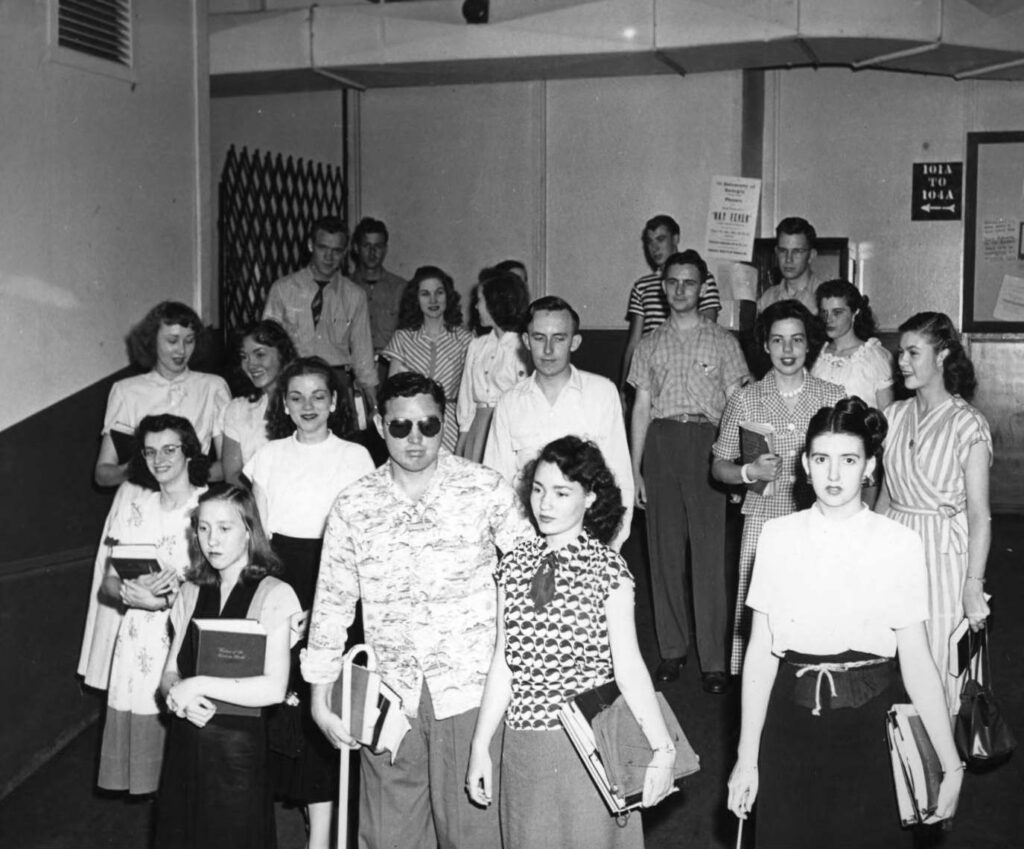
Courtesy of Special Collections & Archives, Georgia State University Library.
The merger with the university did in fact contribute to the quality of the Atlanta Division. The Bachelor of Business Administration (B.B.A.) degree was approved. UGA administrators oversaw recruitment and dealt with such issues as class sizes, academic standards, probation and exclusion policies, and salary inequities. They also inaugurated art, music, and drama classes. With the chancellor’s strong support and improved state funding, accreditation came in 1952. But UGA systematically continued to reject all new courses and programs regarded as expansionist, and it vetoed graduate work in business.
Independence
By early 1955 enrollment in the Atlanta Division approached 8,000, and the division’s supporters were demanding new programs. Pressed by Chancellor Harmon Caldwell and Georgia legislators, who believed a continuing merger to be impractical and costly, the regents, over fierce opposition from UGA, created the Georgia State College of Business Administration (1955), later named Georgia State College (1962).
In the late 1950s and early 1960s, a federal mandate to desegregate the University System of Georgia caused a crisis throughout the system. Georgia State College’s enrollment began to decline, and the Georgia legislature passed a law authorizing the governor to close any public system with racially mixed schools, which could have threatened the existence of the state’s public colleges as well. Fortunately for the newly independent Atlanta school, attention focused on the UGA campus in Athens, which was the target of a 1960 federal court order to admit two African American students, Charlayne Hunter and Hamilton Holmes. When the students enrolled at UGA and Governor Ernest Vandiver refrained from closing the state’s flagship institution, it became clear that Georgia State and the other university system schools would also survive.
Meanwhile, President Noah Langdale Jr. (1957-88) and Vice President William Suttles, bolstered by the accrediting agencies, deans, a growing faculty, and the Atlanta community, pushed for expanded functions. Langdale also established the Georgia State College Foundation (later the GSU Foundation) in 1958 to garner private and public financial support. The college gradually added majors, graduate work, and doctoral degrees, beginning first in the stronger business-school departments and later extending to the arts and sciences.
University Status
By 1969 the Ph.D. degree was available in many business school departments and in psychology, English, history, and political science. New schools and programs opened in education, the health sciences, and urban and general studies. In keeping with its original mission as a downtown community college, Georgia State also offered associate degrees; remedial, vocational, and cultural courses; and adult service programs. In 1969, when the college’s fall enrollment reached 13,000, Chancellor George Simpson recommended university status. He urged GSU, as an urban university, to emphasize both academic excellence and service, and a new School of Special Studies was established to offer developmental courses to students who were poorly prepared for college work. Over the next two decades, GSU fleshed out degree programs as the various departments grew and gained academic standing.
GSU applied for a law school after Emory University in the early 1970s closed its evening program for part-time students. The need for evening law courses seemed obvious, and the regents narrowly voted to accept the application. As strong opposition developed at UGA, powerful legislative allies also cited fiscal reasons for rejecting the proposal. The school finally opened for classes in fall 1982.
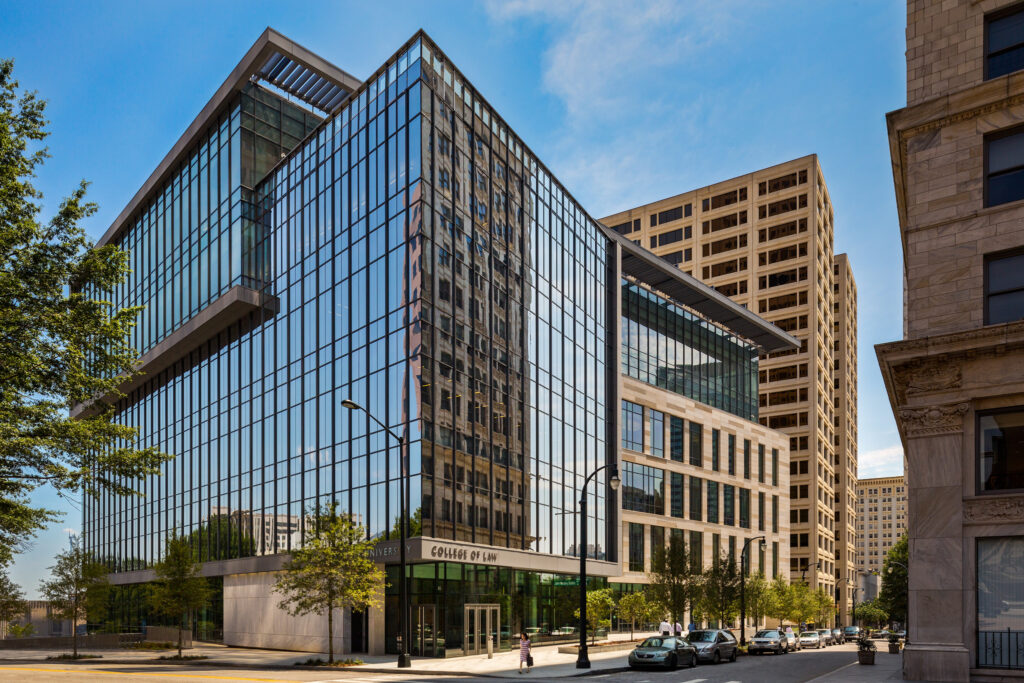
Photograph by Jayingram11
The typical GSU student has always been a working young adult—in 1977, for example, 57 percent worked throughout the year to support their education, and another 10 percent worked “at times” during the school year. The qualifications of that typical student, however, have changed considerably. The open admission policy instituted by Sparks was abandoned under his successors. By 1975 the average student SAT score was around 950, although it shortly declined by 50 points and remained at that level for nearly two decades. With the abandonment of Special Studies and the adoption of higher entrance requirements in the mid-1990s, the average student SAT reached 1048 in 1998.
Striving for Excellence
GSU’s complex and contradictory mission to pursue both excellence and community service became challenging, particularly without adequate funding. Nevertheless, the new urban life program in 1969 brought to Atlanta one of six federally funded urban observatories. The Economic Forecasting Center in 1973 began issuing reports that were well received and widely cited. Succeeding university activities—in urban archaeology, gerontology, AIDS and Alzheimer’s research, sports medicine, child health care, recreation, and hospitality administration, as well an astronomical observatory, a Policy Research Center, and a Center for High Angular Resolution Astronomy—signaled the expanding faculty’s wide interests and also its ability to attract outside funding.
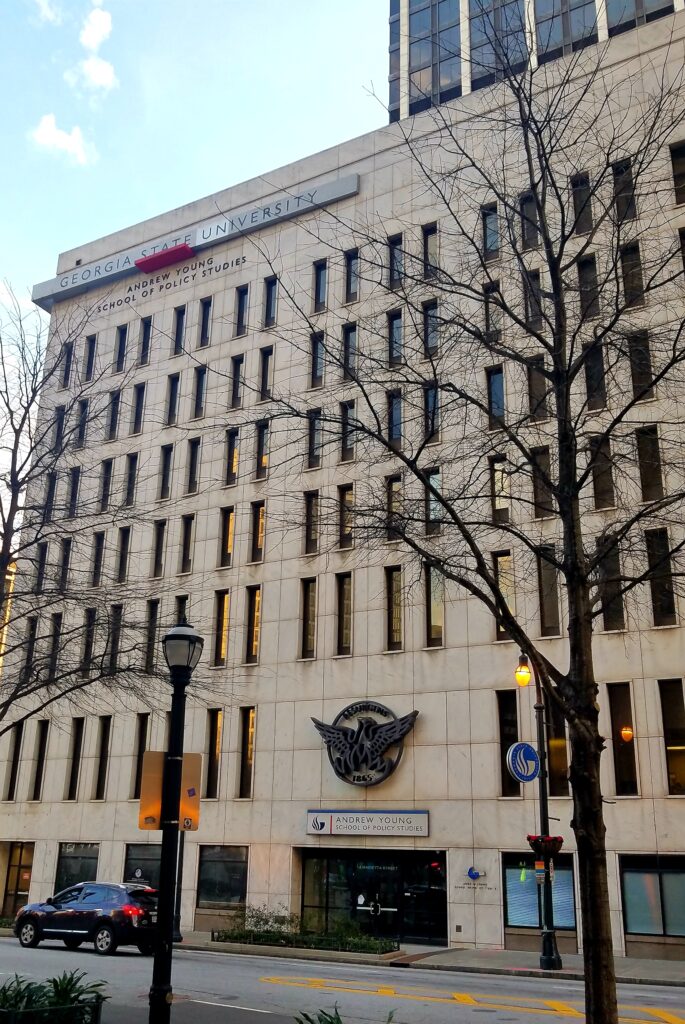
Photograph by JJonahJackalope
Some of this expansion had been overseen by Vice President and Provost William Suttles (acting president, 1988-89), including the long-anticipated legislative funding of a new science building. His successor, President John Palms (1989-91), believed GSU could become a center for the arts and sciences, while Dean Sherman Day (acting president, 1991-92) briefly stayed the course until the arrival of President Carl Patton in 1992. By 2001, with research money reaching some $40 million (compared with $100,000 in 1967), Patton had defined GSU’s mission as a research institution.
Twenty-First Century
GSU moved into the twenty-first century as an urban university prepared to make greater contributions to Atlanta and the region. The college’s symbiotic relationship with Atlanta has been fundamental to its existence and growth, and its promotional literature continues to recognize this mutual dependence.
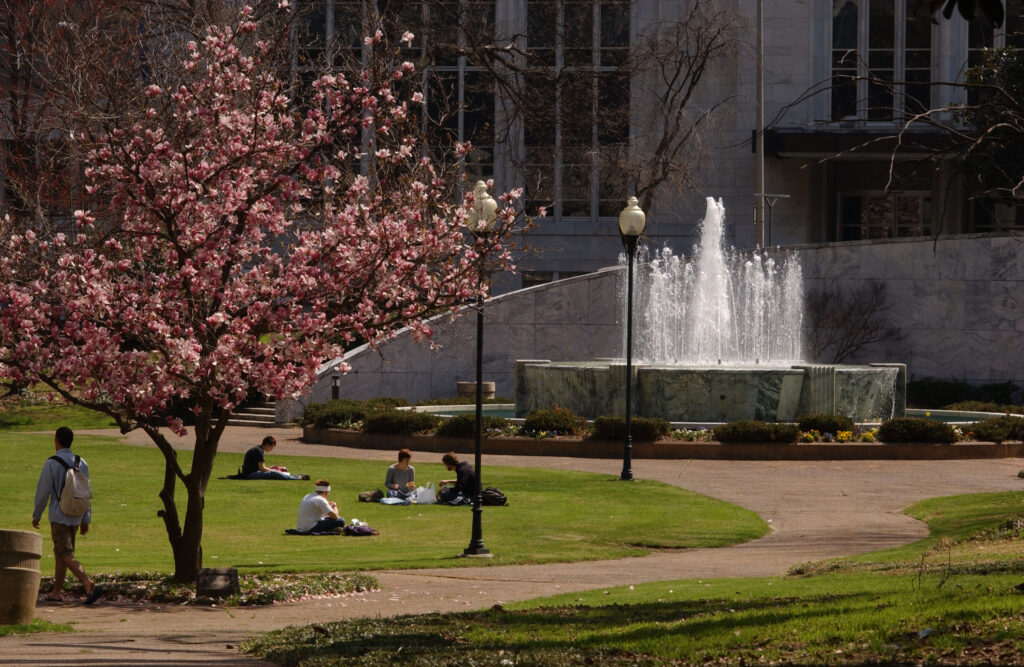
Courtesy of Georgia State University
In January 2009 Mark P. Becker assumed the presidency of the university upon Patton’s retirement. In the fall of that year GSU’s six colleges offered 250 fields of study, with 55 nationally accredited degree programs. Its libraries hold about 1.3 million volumes and more than 7,900 periodicals.
Although rated only in the fourth tier of excellence by U.S. News and World Report, GSU has received recognition for individual programs. For example, in 2009 U.S. News and World Report ranked the J. Mack Robinson College of Business at number five in the nation, and GSU’s part-time law program at number fifteen.
Georgia Perimeter College Consolidation
Continuing a systemwide program of school mergers, the University System of Georgia voted to consolidate Georgia State University and Georgia Perimeter College at a meeting of the Board of Regents on January 6, 2015. In January 2016 the schools were entirely consolidated.
The new school kept the Georgia State University name, and its main campus remained downtown. Georgia Perimeter became its own college within the university, renamed Perimeter College, and all its metropolitan campuses remained open. With the merger, GSU became one of the largest campuses in the country in terms of enrollment.
















